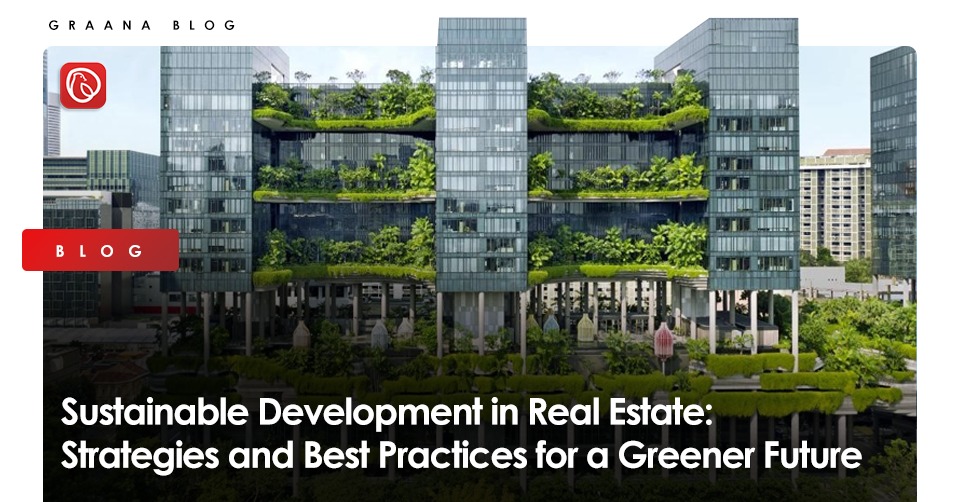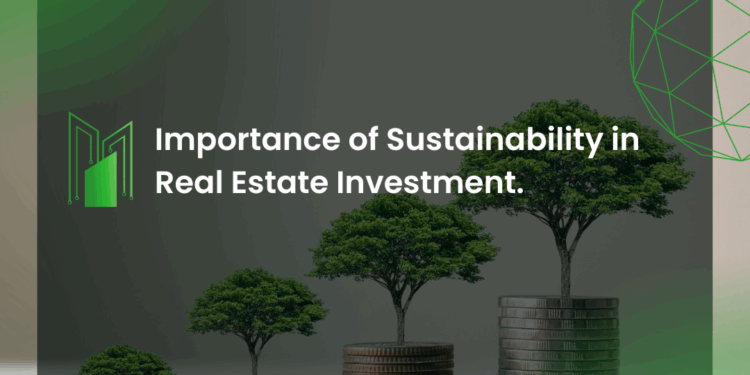Exploring the realm of Investment Strategies for Sustainable Real Estate Growth, this introduction sets the stage for a deep dive into the topic, providing a captivating overview that sparks curiosity and interest.
Detailing the various aspects of sustainable real estate investments, this paragraph offers valuable insights and sets the tone for the discussion ahead.
Overview of Sustainable Real Estate Investment Strategies
Sustainable real estate growth refers to the development and management of properties in a way that meets the needs of the present without compromising the ability of future generations to meet their own needs. It involves incorporating environmentally friendly practices, social responsibility, and economic viability into real estate projects.The importance of adopting sustainable investment strategies in real estate cannot be overstated.
With the increasing awareness of environmental issues and the need for conservation, investors are looking towards sustainable options that not only provide financial returns but also contribute positively to the environment and society. By investing in sustainable real estate, investors can align their financial goals with their values and contribute to a more sustainable future.Key factors driving the need for sustainable investment in real estate include the growing concern for climate change, stricter regulations regarding energy efficiency and environmental impact, changing consumer preferences towards sustainable living, and the potential for long-term cost savings through energy-efficient buildings.
As the demand for sustainable properties continues to rise, investors who embrace sustainable investment strategies stand to benefit from increased property value, lower operational costs, and a competitive edge in the market.
Types of Sustainable Real Estate Investments

When it comes to sustainable real estate investments, there are various types that investors can consider. These investments focus on reducing environmental impact, promoting energy efficiency, and incorporating sustainable practices.
Green Buildings
- Green buildings are designed and constructed to be environmentally friendly and resource-efficient.
- Features of green buildings may include energy-efficient lighting and HVAC systems, use of recycled materials, and water conservation measures.
- These buildings aim to reduce carbon footprint and operating costs while providing healthier indoor spaces for occupants.
Renewable Energy Projects
- Investing in renewable energy projects within real estate involves incorporating solar panels, wind turbines, or geothermal systems into buildings.
- These projects help generate clean energy on-site, reducing dependence on traditional energy sources and lowering utility bills.
- By producing renewable energy, real estate properties can contribute to a more sustainable future and potentially increase their value.
Comparison with Traditional Real Estate Investments
- Traditional real estate investments focus primarily on financial returns and property appreciation without considering environmental impact.
- Sustainable real estate investments prioritize long-term sustainability, social responsibility, and environmental stewardship alongside financial gains.
- While traditional investments may offer immediate returns, sustainable investments can provide resilience against future regulatory changes and increasing demand for green properties.
Examples of Successful Sustainable Real Estate Projects
- The Edge in Amsterdam, known as the greenest office building in the world, utilizes solar panels, rainwater harvesting, and smart technology to achieve energy efficiency.
- One Central Park in Sydney features vertical gardens, water recycling systems, and solar panels, demonstrating a commitment to sustainability in urban development.
- Masdar City in Abu Dhabi is a planned eco-city designed to be zero-carbon and zero-waste, showcasing sustainable urban living practices on a large scale.
Factors Influencing Sustainable Real Estate Growth
When it comes to sustainable real estate growth, there are several key factors that play a crucial role in shaping the market dynamics. These factors include economic conditions, social trends, environmental concerns, government policies, consumer preferences, and market trends.
Economic Factors
- The state of the economy, including interest rates, inflation, and overall market stability, can significantly impact the demand for sustainable real estate.
- Investor confidence and access to financing options also play a pivotal role in driving growth in this sector.
Social Factors
- Changing demographics, lifestyle preferences, and urbanization trends influence the demand for sustainable properties that cater to modern living needs.
- Increasing awareness about environmental issues and the shift towards eco-friendly living have led to a rising interest in sustainable real estate options.
Environmental Factors
- The focus on reducing carbon footprint, energy efficiency, and sustainable building practices is driving the development of green buildings and eco-friendly communities.
- Climate change concerns and the push for sustainable development goals are pushing the real estate industry towards more environmentally conscious practices.
Government Policies and Regulations
- Government incentives, tax benefits, and regulations promoting sustainable construction and energy-efficient buildings are encouraging developers to invest in green projects.
- Mandatory green building certifications and compliance with environmental standards are shaping the landscape of sustainable real estate development.
Consumer Preferences and Market Trends
- Increasing demand for healthier living spaces, smart technology integration, and community amenities are driving the preference for sustainable properties among homebuyers.
- Rising awareness about the long-term benefits of sustainable real estate, such as lower utility costs and enhanced quality of life, is influencing buying decisions in the market.
Strategies for Implementing Sustainable Real Estate Investments
Implementing sustainable real estate investments involves taking specific steps to integrate sustainability into real estate investment portfolios. This not only helps in contributing to environmental conservation but also provides financial incentives and benefits for investors. Selecting sustainable real estate projects with growth potential is crucial for long-term success in this sector.
Integrating Sustainability into Real Estate Investment Portfolios
Integrating sustainability into real estate investment portfolios requires a strategic approach. Investors can start by conducting thorough research on sustainable real estate options available in the market. This includes looking for properties with green certifications, energy-efficient features, and eco-friendly construction materials.
- Consider the environmental impact of the property
- Assess the energy efficiency and water conservation measures in place
- Look for properties with sustainable amenities and features
Financial Incentives and Benefits
Investing in sustainable real estate projects often comes with financial incentives and benefits. These can include tax credits, rebates, and grants for implementing green initiatives. Additionally, sustainable properties tend to have lower operating costs and higher resale values in the long run.
Green buildings can command higher rents and attract quality tenants, leading to increased revenue streams for investors.
Selecting Sustainable Real Estate Projects
When selecting sustainable real estate projects, investors should consider the growth potential of the property in terms of sustainability. This involves looking at factors such as location, market demand for eco-friendly properties, and potential for future appreciation.
- Assess the market demand for sustainable properties in the area
- Consider the long-term value and appreciation potential of the property
- Evaluate the sustainability features and certifications of the project
Closing Summary

Concluding our exploration of Investment Strategies for Sustainable Real Estate Growth, this final paragraph encapsulates the key points discussed, leaving readers with a lasting impression of the importance of sustainable practices in real estate.
FAQ Resource
What are the benefits of sustainable real estate investments?
Sustainable real estate investments offer long-term financial stability, positive environmental impact, and increased property value over time.
How can I identify sustainable real estate projects with growth potential?
Look for projects that focus on energy efficiency, green certifications, and sustainable building materials, as these factors often indicate growth potential in the real estate market.
What role do government policies play in promoting sustainable real estate development?
Government policies provide incentives, regulations, and support for sustainable real estate projects, encouraging developers and investors to prioritize environmental sustainability in their ventures.








